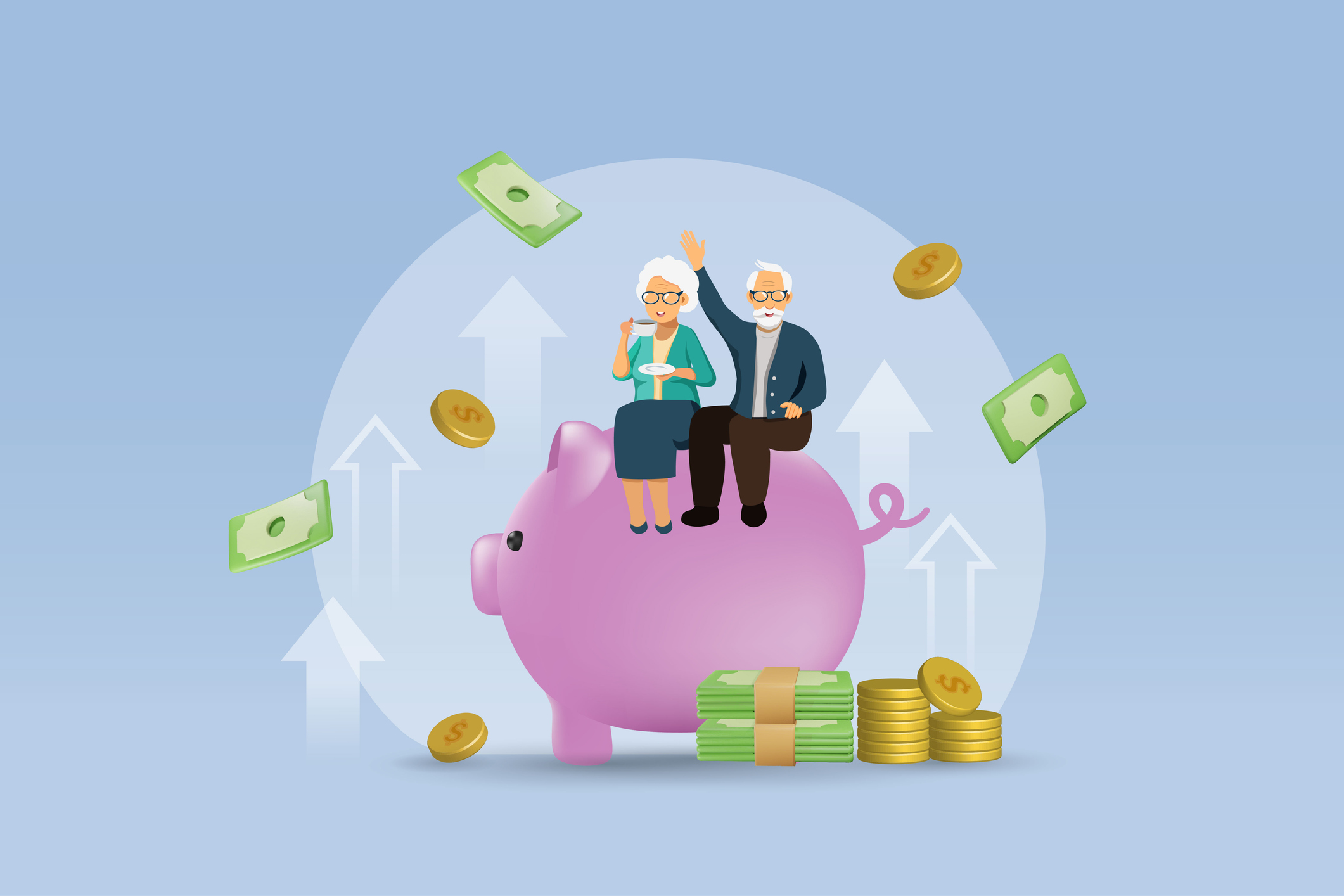Can You Use a Credit Card on Venmo? Fees, Security and More to Know
Here’s what you need to know about using a credit card on Venmo.


Like other peer-to-peer (P2P) payment apps, Venmo makes sending money to family, friends or businesses convenient, quick and secure. Whether you're paying back your share of last night's dinner bill or sending money to a nephew on their birthday, "venmoing" someone lets you easily transfer cash from your bank account to theirs.
When setting up an account with Venmo, you link and verify a bank account from which your digital payments will be sent.
But what if you don’t want funds to be drawn from your checking or high-yield savings account? With Venmo, it is possible to link payments to a credit card, including your favorite rewards credit card — but it may not be worth it.
From just $107.88 $24.99 for Kiplinger Personal Finance
Become a smarter, better informed investor. Subscribe from just $107.88 $24.99, plus get up to 4 Special Issues

Sign up for Kiplinger’s Free Newsletters
Profit and prosper with the best of expert advice on investing, taxes, retirement, personal finance and more - straight to your e-mail.
Profit and prosper with the best of expert advice - straight to your e-mail.
Here’s what you need to know about using a credit card with Venmo, from fees to set-up and more.
Using a credit card on Venmo
First off, can you use a credit card on Venmo? Yes, you can send payments with a credit card on Venmo, although it’s important to know the pros and cons of doing so beforehand.
Pros of using a credit card on Venmo:
The most sensible way to use a credit card on Venmo is when you are trying to meet minimum spending requirements to earn your credit card’s sign-up or welcome bonus.
Also, if you’re strapped for cash, you can use a credit card to pay someone over Venmo without risking overdrafting your checking account or keeping your friend waiting.
Just be sure to pay off your credit card as soon as possible so that you won't owe hefty interest charges and end up in debt. Doing so will also help boost your credit score.
Cons of using a credit card on Venmo:
On the other hand, there are drawbacks to using a credit card on Venmo: fees.
When using a credit card on Venmo, you’ll be charged a 3% fee when making a payment. No fee will be charged if using a debit card or bank account. So, even if you pay with a rewards credit card like a 2% back card, you will likely lose money on Venmo payments linked to credit cards.
Also, when sending payments to friends and families with a credit card over Venmo, your card issuer may code the transaction as a cash advance, resulting in more fees and a higher interest rate. You also won’t be able to transfer any Venmo balances onto your credit card.
Venmo may not recognize some cards. For example, Health Savings Account cards may be difficult to link to your Venmo account.
Remember that most peer-to-peer payment apps do not offer fraud or purchase protection as a credit card might.
Moreover, the cash you keep in the app is usually not FDIC-insured. Readers should also be cautious of apps' offers to take out Buy Now, Pay Later loans or to convert cash to Bitcoin.
A better option: Consider using Apple Cash; when linked to the Apple Card, Apple Cash charges no fee and gives you cash back.
How much does Venmo charge for using a credit card?
Venmo charges a 3% fee for payments made with a credit card. Additionally, your credit card company may charge cash advance fees if you use your credit card to make payments on Venmo.
According to Experian, the most common cash advance fee structure is 5% of the advance amount or $10, whichever is more, but it ultimately depends on your card issuer.
Is it safe to use a credit card on Venmo?
Venmo is mostly safe — but with some important caveats. Like other peer-to-peer payment apps, Venmo is increasingly vulnerable to scammers, and customers have complained about how the company has handled these problems.
Venmo encrypts your account details, and the app also uses multi-factor authentication to confirm your identity. You can also set up a unique PIN code and/or use Touch ID to provide another layer of security to your account.
Just be sure not to fall for any of the most common scams on Venmo, and think twice about storing money with Venmo; unlike banks, money stored on payment apps is not under Federal Deposit Insurance Corporation (FDIC) protection.
The risk of scams has led to lawmakers calling for further protections for users.
In early August, Rep. Maxine Waters, D-CA, and Sens. Richard Blumenthal, D-CT, and Elizabeth Warren, D-MA, introduced a bill, the Protecting Consumers from Payment Scams Act, that would enact further protections for users in the face of scams. It's an update to the Electronic Fund Transfer Act (EFTA), which protects customers in cases of lost or stolen credit cards and was passed in 1978.
Actions are also happening on the state level. For example, earlier this year, New York state officials introduced the Financial App Security Act, which would require companies that offer peer-to-peer mobile payment services, like Venmo, to enact security measures designed to protect consumers from financial fraud and theft.
How to use a credit card on Venmo
Here’s how to add a credit card to your account, according to Venmo, on the Venmo app:
- Go to the "Me" tab by tapping your picture or initials
- Go to the Wallet section
- Tap “Add bank or card...” and then tap “Card”
- Add your card information manually or with your phone’s camera
To add a card to your Venmo account from a computer, go to your payment methods then follow these steps:
- Click "Add bank or card"
- Select "Debit or credit card" then add your card information
Bottom line on using a credit card on Venmo
While using a credit card to send payments over Venmo is technically possible, it's not advised. You'll be charged a 3% fee for using a credit card on Venmo, plus any other cash advance fees charged by your bank.
Even if your card earns cashback on the payment, you'll still likely lose money. That's why it's wiser to consider a cash back credit card, as it earns you perks on everyday purchases without the transaction fee.
The best cash back credit cards save you money on everyday purchases. See our top picks, powered by Bankrate. Advertising disclosure.
Related Content
Profit and prosper with the best of Kiplinger's advice on investing, taxes, retirement, personal finance and much more. Delivered daily. Enter your email in the box and click Sign Me Up.

Erin pairs personal experience with research and is passionate about sharing personal finance advice with others. Previously, she was a freelancer focusing on the credit card side of finance, but has branched out since then to cover other aspects of personal finance. Erin is well-versed in traditional media with reporting, interviewing and research, as well as using graphic design and video and audio storytelling to share with her readers.
-
 How to Protect Yourself and Others From a Troubled Adult Child
How to Protect Yourself and Others From a Troubled Adult ChildThis case of a violent adult son whose parents are in denial is an example of the extreme risks some parents face if they neglect essential safety precautions.
-
 To Build Client Relationships That Last, Embrace Simplicity
To Build Client Relationships That Last, Embrace SimplicityAs more automation becomes the norm, you can distinguish yourself as a financial professional by using technology wisely and prioritizing personal touches.
-
 Client Demand Is Forcing Advisers to Specialize: How to Deliver
Client Demand Is Forcing Advisers to Specialize: How to DeliverThe complexity of wealthy clients' needs — combined with AI and consumer demand — suggests the future of financial planning belongs to specialized experts.
-
 How to Protect Yourself and Others From a Troubled Adult Child: A Lesson from Real Life
How to Protect Yourself and Others From a Troubled Adult Child: A Lesson from Real LifeThis case of a violent adult son whose parents are in denial is an example of the extreme risks some parents face if they neglect essential safety precautions.
-
 Here's How Much You Can Earn with a $100,000 Jumbo CD
Here's How Much You Can Earn with a $100,000 Jumbo CDYou might be surprised at how fast a jumbo CD helps you reach your goals.
-
 A Financial Planner Takes a Deep Dive Into How Charitable Trusts Benefit You and Your Favorite Charities
A Financial Planner Takes a Deep Dive Into How Charitable Trusts Benefit You and Your Favorite CharitiesThese dual-purpose tools let affluent families combine philanthropic goals with advanced tax planning to generate income, reduce estate taxes and preserve wealth.
-
 How Financial Advisers Can Best Help Widowed and Divorced Women
How Financial Advisers Can Best Help Widowed and Divorced WomenApproaching conversations with empathy and compassion is key to helping them find clarity and confidence and take control of their financial futures.
-
 Your Guide to Buying Art Online
Your Guide to Buying Art OnlineFrom virtual galleries to social media platforms, the internet offers plenty of places to shop for paintings, sculptures and other artwork without breaking the bank.
-
 I'm 59 With $1.7 Million Saved and Just Lost My Job. Should I Retire at 59½, or Find New Work?
I'm 59 With $1.7 Million Saved and Just Lost My Job. Should I Retire at 59½, or Find New Work?We asked professional wealth planners for advice.
-
 Metro by T-Mobile Is Giving Away This Samsung Galaxy A16: Which Plans Are Eligible?
Metro by T-Mobile Is Giving Away This Samsung Galaxy A16: Which Plans Are Eligible?Metro by T-Mobile is offering free Samsung Galaxy A16 phones on eligible plans right now. Here’s how the deal works.
-
 I Drive and Collect Classic Cars: Here’s How I Got in the Game Without Spending a Fortune
I Drive and Collect Classic Cars: Here’s How I Got in the Game Without Spending a FortuneAre classic cars a hobby or an investment strategy — or both? Either way, the vintage car scene is much cooler and more affordable than you think.
